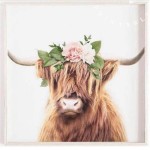What Colors Go With Farmhouse Decor
Farmhouse decor, known for its warmth, simplicity, and connection to nature, has steadily grown in popularity as a design aesthetic. Achieving an authentic farmhouse look relies heavily on selecting the right color palette. These colors work together to evoke a sense of comfort, nostalgia, and rustic charm. Understanding the nuances of color theory and how specific hues interact within a space is crucial for successfully implementing farmhouse design principles.
The farmhouse aesthetic is characterized by a blend of vintage and modern elements, creating a balanced and inviting atmosphere. A well-chosen color palette serves as the foundation for achieving this balance. The colors used in farmhouse decor often draw inspiration from natural elements, such as the countryside, barns, and antique furniture. These colors are characteristically muted, soft, and evoke a sense of timelessness.
Selecting the appropriate colors for farmhouse decor involves more than simply choosing aesthetically pleasing shades. Consideration must be given to the existing architectural features of the home, the amount of natural light available, and the desired mood of each room. The goal is to create a cohesive and harmonious color scheme that enhances the overall feeling of warmth and comfort associated with farmhouse design.
Essential Neutral Colors for Farmhouse Style
Neutral colors form the backbone of any successful farmhouse color palette. These colors provide a versatile backdrop that allows other design elements, such as furniture, textiles, and accessories, to stand out. White, cream, beige, and gray are all essential neutral colors that are frequently used in farmhouse decor. The specific shade of each neutral color can be adjusted to suit the individual preference and the overall aesthetic of the space.
White is arguably the most prevalent neutral color in farmhouse design. It creates a clean, bright, and airy atmosphere, which is particularly useful in smaller spaces or rooms with limited natural light. White can be used on walls, ceilings, trim, and furniture to create a sense of openness. Different shades of white, such as off-white, antique white, and creamy white, can be used to add subtle variations and depth to the color scheme.
Cream is a warmer alternative to white, offering a softer and more inviting feel. It is particularly well-suited for spaces where a sense of coziness and comfort is desired. Cream can be used on walls, furniture, and textiles to create a warm and welcoming atmosphere. It also pairs well with other neutral colors, such as beige and gray. Furthermore, cream often pairs with rustic wood tones to further enhance the natural appeal.
Beige is another versatile neutral color that can be used to add warmth and depth to a farmhouse color palette. It is a more grounded and earthy color than white or cream, making it well-suited for spaces where a connection to nature is desired. Beige can be used on walls, floors, and furniture to create a sense of solidity and stability. It also serves as a neutral backdrop for bolder accent colors.
Gray has become increasingly popular in farmhouse decor, offering a contemporary twist on traditional neutral colors. It is a sophisticated and versatile color that can be used to create a range of moods, from calm and serene to dramatic and bold. Gray works well on walls, furniture, and even cabinetry. Lighter shades of gray, such as light greys and greiges, create a softer and more airy feeling compared to darker charcoal greys.
Incorporating Accent Colors into a Farmhouse Palette
While neutral colors provide the foundation for a farmhouse color palette, accent colors add personality, visual interest, and depth. The key is to select accent colors that complement the neutral backdrop and enhance the overall feeling of warmth and comfort. The most common accent colors used in farmhouse decor include blues, greens, yellows, and reds, all inspired by natural elements.
Blues, particularly muted and pastel shades, are a popular choice for accent colors in farmhouse decor. They evoke a sense of calm, serenity, and connection to nature. Light blues, such as sky blue and powder blue, can be used to add a touch of airiness and brightness to a space. Deeper blues, such as navy blue and denim blue, can be used to add a touch of sophistication and drama. Blue often works well with worn furniture.
Greens, another natural color, are often used to bring the outdoors inside. They evoke a sense of freshness, vitality, and connection to nature. Soft greens, such as sage green and olive green, can be used to add a touch of tranquility and warmth to a space. Darker greens, such as forest green and emerald green, can be used to add a touch of richness and depth. Green is a natural complement to wood and other natural materials.
Yellows, particularly warm and muted shades, can be used to add a touch of sunshine and optimism to a farmhouse color palette. They evoke a sense of happiness, energy, and warmth. Pale yellows, such as butter yellow and lemon yellow, can be used to add a touch of brightness and cheerfulness to a space. Mustard yellow, works well with weathered wood. Yellows add a sense of age, as if the color has been exposed to the sun.
Reds, while often used sparingly, can add a touch of warmth, passion, and energy to a farmhouse color palette. They evoke a sense of strength, vitality, and connection to tradition. Brick red and barn red colors are frequently used in farmhouse design to add a touch of rustic charm. Red can be incorporated through textiles, artwork, or small accessories.
Working with Wood Tones and Natural Materials
Wood tones and other natural materials play a crucial role in farmhouse decor. The warmth and texture of wood contribute significantly to the overall feeling of rustic charm and connection to nature. Different types of wood, such as pine, oak, and reclaimed wood, offer varying levels of warmth, character, and visual interest. The key is to select wood tones that complement the chosen color palette and enhance the overall aesthetic of the space.
Lighter wood tones, such as pine and birch, create a bright and airy atmosphere, particularly when paired with light neutral colors. They are well-suited for spaces where a sense of openness and simplicity is desired. Light wood tones can be used on floors, furniture, and cabinetry to create a clean and modern farmhouse look.
Medium wood tones, such as oak and maple, offer a balance of warmth and versatility. They are well-suited for a wide range of farmhouse styles, from traditional to contemporary. Medium wood tones can be used on floors, furniture, and cabinetry to create a classic and timeless look.
Darker wood tones, such as walnut and mahogany, add a touch of richness and sophistication to a farmhouse color palette. They are well-suited for spaces where a sense of warmth, depth, and drama is desired. Dark wood tones can be used on floors, furniture, and accent pieces to create a luxurious and inviting atmosphere. Using darker wood tones sparingly can add a counterpoint to lighter colors dominant in farmhouse design.
Reclaimed wood is a popular choice for farmhouse decor, adding a touch of character, history, and sustainability to the space. The weathered appearance and unique imperfections of reclaimed wood create a sense of authenticity and charm. Reclaimed wood can be used on floors, walls, furniture, and architectural details to create a truly unique and personalized farmhouse look.
Other natural materials, such as stone, brick, and metal, can also be incorporated into a farmhouse color palette. These materials add texture, depth, and visual interest to the space. Stone and brick can be used on fireplaces, walls, and floors to create a rustic and grounded feeling. Metal accents, such as iron hardware and galvanized steel, add a touch of industrial charm.

How To Add Color Your Farmhouse With Ease The Cottage Market

Mixing Color And Farmhouse Style Jordecor

Ways To Infuse Color In Your Space Courtney Warren Home

Top 15 Creative Tips To Modern Farmhouse Interior Hayooo Paint Colors

Our House Modern Farmhouse Paint Colors Christina Maria Blog

Farmhouse Style Paint Colors And Decor Decorating

How To Choose The Perfect Farmhouse Paint Colors

18 Farmhouse Decorating Ideas For Your Home Extra Space Storage

Best Types Of Paint Colors For Farmhouse Décor In 2025

Farmhouse Paint Colors By Beamin Moore
Related Posts







